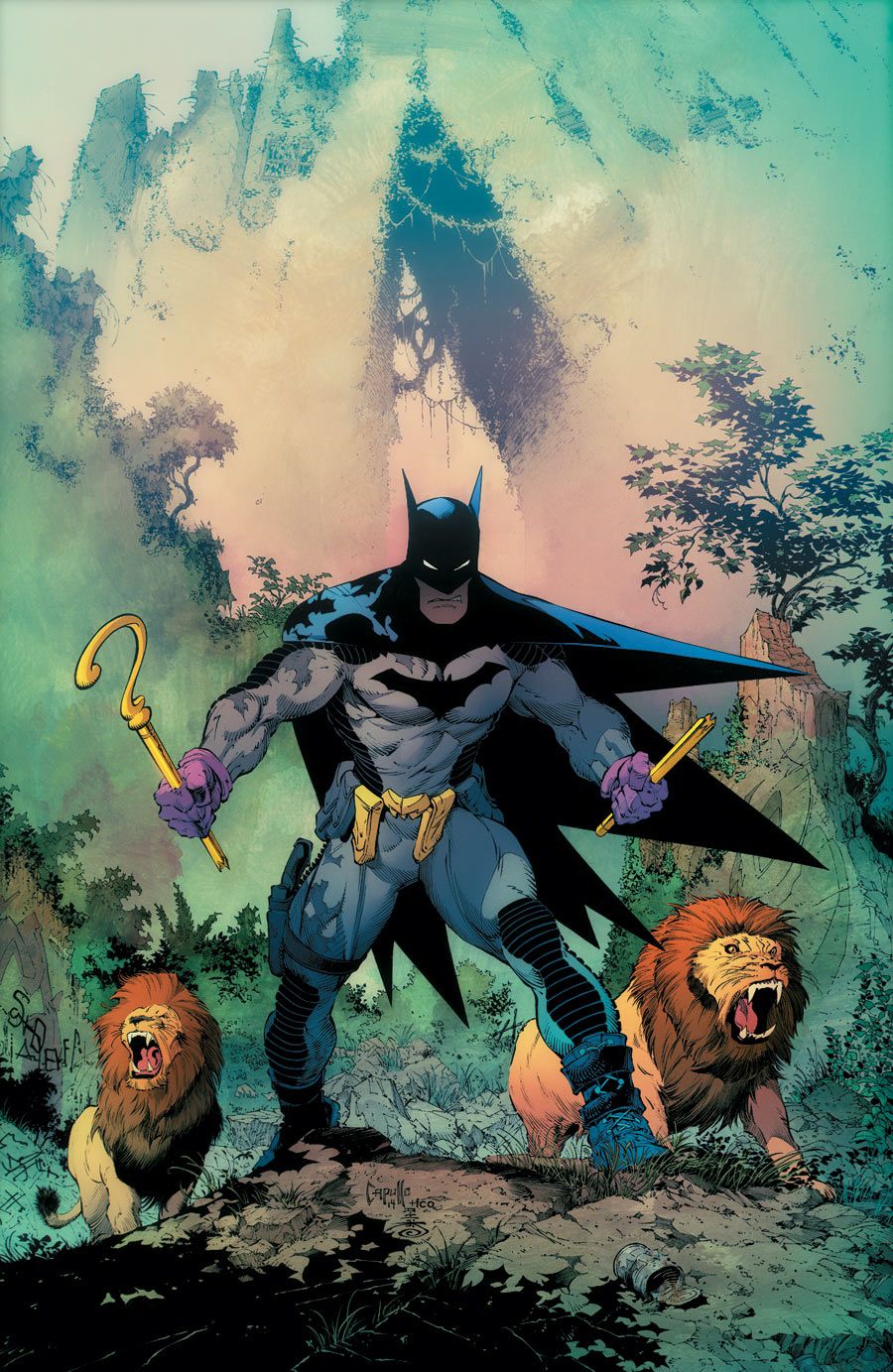"Batman" #33 brings "Zero Year" to a close, the year-long story that takes Batman's earliest years and recasts them for the "New 52" rebooted DC Universe. In many ways, it's got just about everything a fan could ask for: a battle of wits against the Riddler, a final struggle for freedom from Gotham City and another look into just what makes Bruce Wayne tick.
It's a joy to see riddles at the center of the final confrontation between Batman and the Riddler. That may seem obvious, and yet you'd be surprised at how many times it's curiously absent from the character despite it being part of his name. But the setup right from the start of the issue -- Batman having to answer a series of riddles before time runs out to try and save all of Gotham City -- in many ways brings the character of Batman sharply into focus. This is a character who originally debuted in "Detective Comics" after all; we need to not just see the gadgets and the brawn, but also the brain. Snyder nails that portion of the comic perfectly; it has Batman using his wits, but in a way that slices through the problem in a way that the original trap wasn't designed to be solved. It's a very Batman moment, one that you need to have as part of the climax to the story that's supposed to define the character early in his career.
But then again, that's what "Batman" #33 does over and over again. This issue shows Batman's level of sacrifice -- what he's willing to repeatedly throw away -- in order to help the residents of Gotham. There are a few moments that are wonderfully full of bravado, like how Batman is able to start the electricity within all of Gotham and get its systems online once more. But then there are the quieter moments, like the resolution to the flashbacks to a young Bruce Wayne who wants to erase the awful things of his past, or even Batman's understanding just what he's going to give up by continuing to pull on his mask night after night. Snyder pulls those out quite well; in many ways Batman is a mixture of whipping boy and sin-eater, absorbing the darkness of Gotham to give others a chance to survive. It's a dark location to deliberately place yourself, stepping in harm's way even while a brighter path out is just around the corner. It has such a strong punch because of how Snyder mixes the Batman of "Zero Year" with that of the younger, more confused character who's willing to engage in electroshock therapy as an escape route. This is someone who's not still wallowing in depression and despair, he's taken that blackness and gripped it tightly.
Capullo in particular nails the final, personal, quiet scenes of "Batman" #33. The look of fear and terror in the young Bruce's eyes as he cries out to stop, absolutely sells Snyder's script. Capullo's best known for big action sequences, but more and more I feel it's the personal moments that his pencils shine best. Likewise, watching Bruce interact with Alfred at the end of "Zero Year" gives a lot of emotional energy and tenderness to the scene; you can see the affection in Bruce's face, and his self-assured knowledge that he's on the right path.
All of that is not to say that the more energetic moments don't work well; they do, too. Capullo and Miki draw a mean Batman scowl under the hood as he confronts the Riddler, for example. Likewise, the Riddler's smug expression is only even better when Batman's throwing a punch or a foot at it. Capullo's Batman is rippling with muscles, but it's a lean, almost swimmer's build here; you would never mistake Batman with Superman, and that's a good thing.
"Batman" #33 gives a very strong conclusion to "Zero Year," and all parties involved should be pleased with the end result. Was it worth the wait as the story moved through its three different phases? I'd say so. Snyder, Capullo, Miki, and FCO Plascencia delivered a great final piece to the puzzle of the dreaded "Zero Year."

